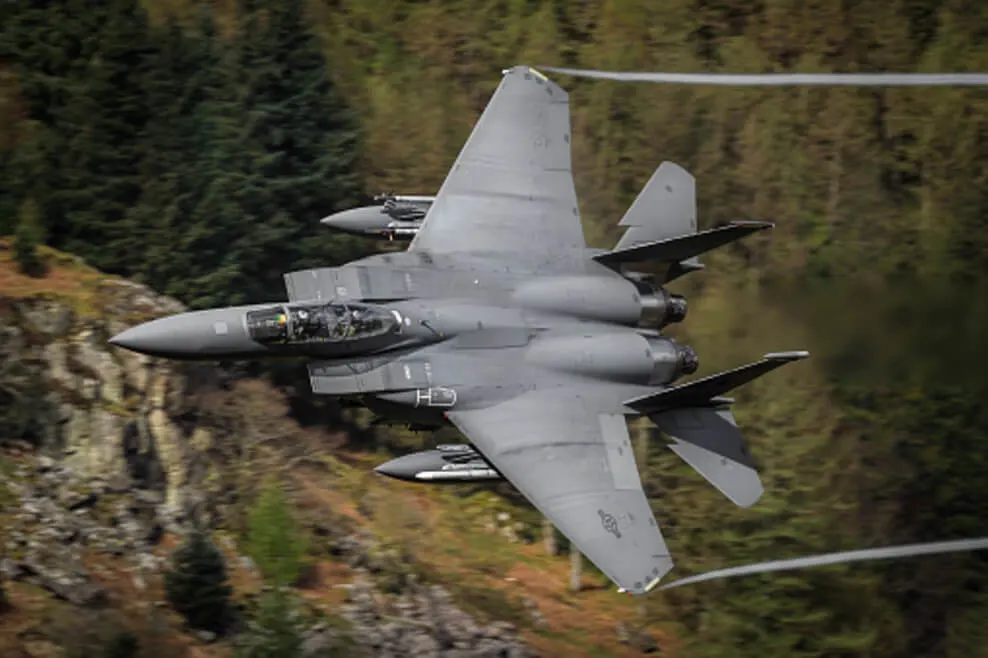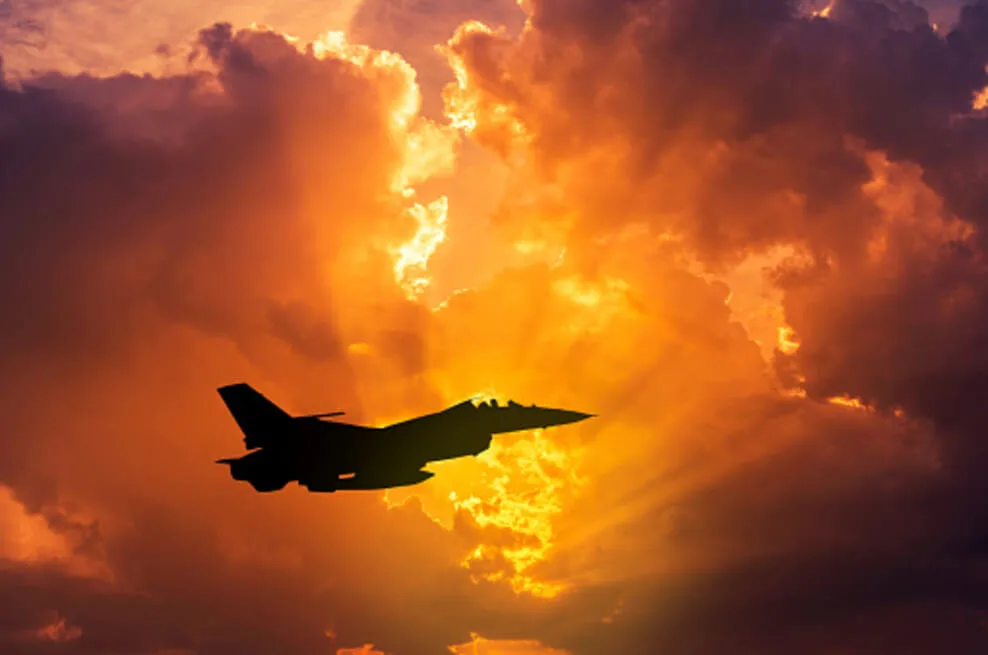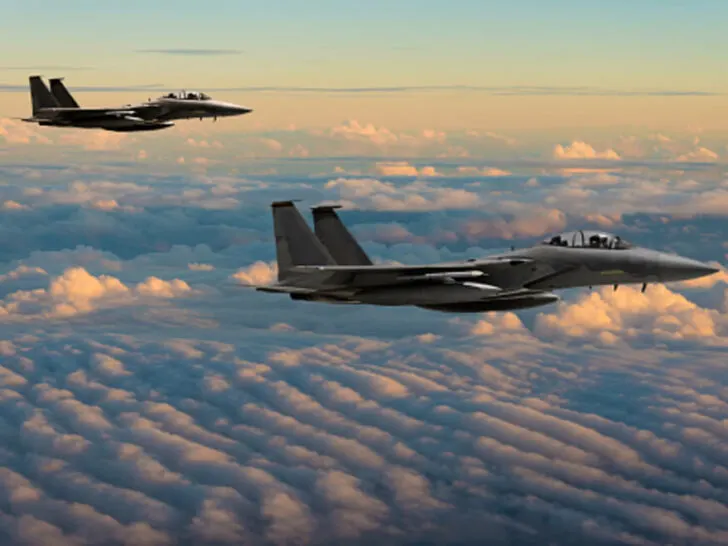The F-15 and F-16 are fighter jets that serve various roles for various militaries. The F-16 is a single-engine fighter aircraft that is less powerful but more maneuverable, whereas the F-15 is a twin-engine fighter jet capable of extremely high speeds and altitudes. Both F-15s and F-16s frequently serve alongside one another in various conflicts, often playing to their respective strengths.
The F-15 and F-16 are fighter jets with unique powers and roles for the U.S. Air Force. They have several differences that I will discuss in this article. You will get all the information you need to know about these fighter jets. Apart from that, the basics and ambiguities will also be discussed.
Just stay calm till the end.
What is the difference between an F-16 and an F-15 in the United States Air Force?
They both identify as “fighters.” They are available in various versions, sub-versions, and production runs, or “blocks,” including ground attack variants, yet there are some considerable differences between the two.
F–15s have two engines and two tails that are also known as vertical stabilizers, which are larger in overall size and can carry a heavier payload than F-16s. They have the upper hand in terms of brute force. While F-16s are smaller and lighter, they have a single-engine and vertical stabilizer and maybe more maneuverable.
How can you compare F-15 and F-16?
The F-15 is the oldest if we start with the original vision of planes. It was designed to engage and defeat the MIG 31, a relatively unknown Soviet fighter at the time.
In any case, the F-15 was given every capability imaginable, including massive amounts of thrust. It can accelerate straight up, has maneuverability, range, a ceiling, and so on. It’s most likely the best of the fourth generation of fighters.
The F-16 was developed later as the Air Force realized it needed more aircraft at a lower cost. It was designed to be inherently unstable to maximize performance; without assistance, a person could not maintain level flight in the aircraft. As a result, the F-16 became the first high-performance fly-by-wire combat.
The pilot in F-16 does not directly control control surfaces; instead, computers process pilot input and manage control surfaces in response.
So the F-15 outranges the F-16 in range and speed, and I believe it outperforms the F-16 in combat maneuverability.
Both aircraft are classified as the fourth generation, which means they are from the same era. They have undergone several evolutions, each with significant upgrades. Except for the F-15 special role aircraft like Wild Weasel, I doubt there is a significant electronic capability difference between them.
The F-15 is finished as a production aircraft, whereas the F-16 may continue to be sold overseas owing to cost concerns.
Which is better, the F-15 or the F-16?
It depends on the model, the mission, and the financial restrictions. To begin with, the F-15 boasts a more powerful radar and a longer range in air-to-air combat.
The F-16 is smaller, making it more difficult to spot visually and having a tighter instantaneous turn radius, while the F-15 is faster and recovers faster due to a higher thrust to weight ratio.
Due to BVR, speed, and recovery time, I would say that the F-15 is better.
The F-15 E is a multi-role Eagle with two seats. I believe the F-15 E can carry more weapons, but the F-16 is a little more versatile.
For example, while I’ve seen photos of the F-15 E firing AGM-65 Mavericks, I don’t believe the F-15 E can carry AGM-88 arms.
Comparing F-15 and F-16: Individual Strengths and Overall Superiority
So, because of the damage targeting pod, I’d choose the F-16 for broad air-to-ground combat. The F-15 E, on the other hand, is excellent for deep strikes.
When comparing them one-on-one, the F-15 comes out on top. It carries a higher payload, accelerates faster, and has a longer range.
If you’re looking to equip an air force, the F-16 is a superior option because it costs about half as much to acquire and maintain as the F-15.
For the same money, an air force of F-16 would easily defeat an air force of F-15 since the Falcons would be woefully outmanned against the Eagles every time.
Overall, I believe the F-16 is the superior aircraft. This is why, unlike the F-15, it is today’s most successful Western fighter.

What do you know about the origin and history of these jets?
Both planes have been in service since the 1970s, but the F-16 is newer and has “fly by wire,” which means the pilot’s control inputs instruct the computer(s), and the computer(s) move the control surfaces. The original version of the F-15 used traditional pilot input via cables and rods, hydraulics, and pulleys, while there is no authentic information about the newer versions.
According to the origin of these jets, they were influenced by the lessons of the Vietnam War. During the Vietnam War, the US preferred heavy fighters with advanced radars and missiles, while the Russians preferred light fighters focusing on maneuverability.
The best Russian fighter was the MiG-21, which had limited radar and was designed to fight with short-range heat-seeking missiles. The F-4 Phantom II, designed as a fleet defense fighter with a secondary air-to-ground role, was the best American fighter in Vietnam.
There are some differences between F-14 and F-15 too. The noticeable ones are detailed below.
The F-14 and F-15 were intended to replace the F-4 in the roles of fleet defense and air superiority. The F-14 was designed to be a fast, dog fighter based on the weapons systems developed for the F-111.
The F-15, on the other hand, had the same air-to-air weapon load as the F-4E, consisting of four AIM-7 Sparrows, four AIM-9 sidewinders, and a 20 MM Vulcan.
Check out the video below to know which one is better!
What is the difference between F-4 and F-111?
The F-4 had one of the most advanced radars of its day, but it was large and expensive to produce. The F-111, an Air Force bomber designed to be used by the Navy as a fleet defense fighter, was the first F-4 replacement. The F-111B would have advanced radar and a 100-mile-range missile to shoot down cruise missiles and bombers. The Navy’s F-111 was grounded.
You have great knowledge about the basics of some fighter jets, such as the F-15, F-16, F-4, and F-111.
F-15 vs. F-16
The two planes are designed for entirely different purposes. The F-15 is a fighter with superior air superiority, whereas the F-16 is a lightweight, versatile, multi-role fighter. This means they were designed differently and fly differently. The F-15 was designed with air-to-ground strikes in mind, and it can carry a variety of guided and unguided weapons on its underwing and centerline pylons.
F-16 is also known as the fighting falcon.
The table below illustrates some key differences between the F-15 and F-16.
| F-15 | F-16 | |
| Role | Air superiority fighter | Multirole fighter aircraft |
| Unit Cost | The US $28-30 million | F-16 A/B: US$14.6 million (1998 dollars) F-16 C/D: US$18.8 million (1998 dollars) |
| Number of engines | 2 | 1 |
| Length | 63 ft 9 in | 49 ft 5 in |
| Combat Radius | 1222 miles | 340 miles |
| Maximum Speed | Mach 2.5 | Mach 2.2 |
What are some basics about F-15?
The F-15 has a specialized fuel compartment that allows two separate fuel packs, known as “fast packs,” to be attached. These packs enable the F-15 to carry more fuel on board to be used if the central fuel supply runs out. It can also stay in the air for longer periods without refueling.
The F-15 has some interesting facts, such as;
- Each pack adds 8,820 pounds of fuel to the tank, allowing for a greater range.
- The F-15 E has a top speed of 1,650 miles per hour at high altitudes.
- It has a maximum rate of climb of 50,000 feet at sea level and a maximum range of 2,762 miles with a full fuel tank.
- The F-15 C has a top speed of 1,665 miles per hour, 15 miles per hour faster than the F-15 E.
- The F-15 has a service ceiling of 60,000 feet.
The F-15, also known as the Eagle, can accelerate like a rocket in pure vertical flight, climbing over 98,000 feet in less than three minutes and sustaining extremely high G turns. The Eagle’s aerodynamics allow it to reach speeds of up to Mach 2.5 while remaining stable at high angles of attack.
One disadvantage of the F-15 is that it can fly faster than its design G loading, so a warning system was installed to remind pilots to slow down.
We have a basic understanding of the F-15, its features, and its distinguishing characteristics. Don’t we?
What are the basics of F-16?

The F-16 was designed as a lightweight fighter with a high power-to-weight ratio for excellent performance, a fly-by-wire control system, and a semi-reclining pilot’s seat for a wide field of vision. It is also known as the Fighting Falcon, capable of air combat but has evolved into an exceptional multi-purpose fighter.
Here are some of the facts about F-16,
- At 40,000 feet, its top speed is more than Mach 2, or 1,320 miles per hour.
- It has a service ceiling of over 50,000 feet.
- In the cockpit of the F-16, there is a joystick and a throttle.
- The most important controls, such as the radio transmission switch and the weapon release, are on these two levers.
Because of its excellent turning abilities and capabilities, the F-16 has become an outstanding and widely used multi-purpose fighter plane.
As we can see, the F-16 has some interesting features that we should always be aware of.
Is the F-15 still in use by the US Air Force?
The last F-15 A, an Oregon Air National Guard aircraft, was retired on September 16, 2009, bringing the F-15 A and F-15 B types out of service in the United States. The F-15 A and B versions have been retired, while the F-15 C and D models have been replaced in US service by the newer F-22 Raptor.
Who would win in a WVR battle between an F-16 and an F-15?
When you engage a different aircraft, you strive to maximize your advantages while exploiting the disadvantages of the opposing jet. In the scenario of a clean F-16 (largemouth/big motor) vs. a clean PW-220 F-15 C, the F-15 will be disadvantaged if it tries to fight a continuous turning fight.
If the conflict takes place at a leisurely pace, the F-16 will be at a disadvantage. Different experiences and training give different answers. F-15 C pilots are solely responsible for air-to-air combat, whereas F-16 pilots are responsible for various tasks.
This usually gives the F-15 C the upper hand! A well-flown F-16 (largemouth, large motor) is a formidable opponent.
It completely depends on who makes fewer errors.

Final Thoughts
- F-15 and F-16 are fighter jets with distinct characteristics and roles in the U.S. Air Force.
- F-15 is a twin-engine fighter known for its superior air superiority capabilities, while F-16 is a single-engine, versatile multi-role fighter.
- F-15 has a more powerful radar, a longer range in air-to-air combat, and a higher thrust-to-weight ratio. This all makes it excel in certain aspects.
- F-16 offers cost advantages, smaller size, and quicker recovery times. This makes it suitable for various missions.
- The choice between F-15 and F-16 depends on mission, model, and budgetary constraints.
- These jets have been in service since the 1970s. The F-16 features a fly-by-wire control system.
- F-15 boasts a specialized fuel system. It allows it to carry more fuel for extended flight durations.
- While F-15 and F-16 serve different purposes. Deciding which one is better depends on specific needs. It also depends on circumstances in the Air Force.
Other Articles
- Soulmates vs. Twin Flames (Is There A Difference?)
- What are the differences between OnlyFans and JustFor.Fans? (All you need to know)
- Scots vs. Irish (Detailed comparison)
The web story version of this article can be previewed here.

